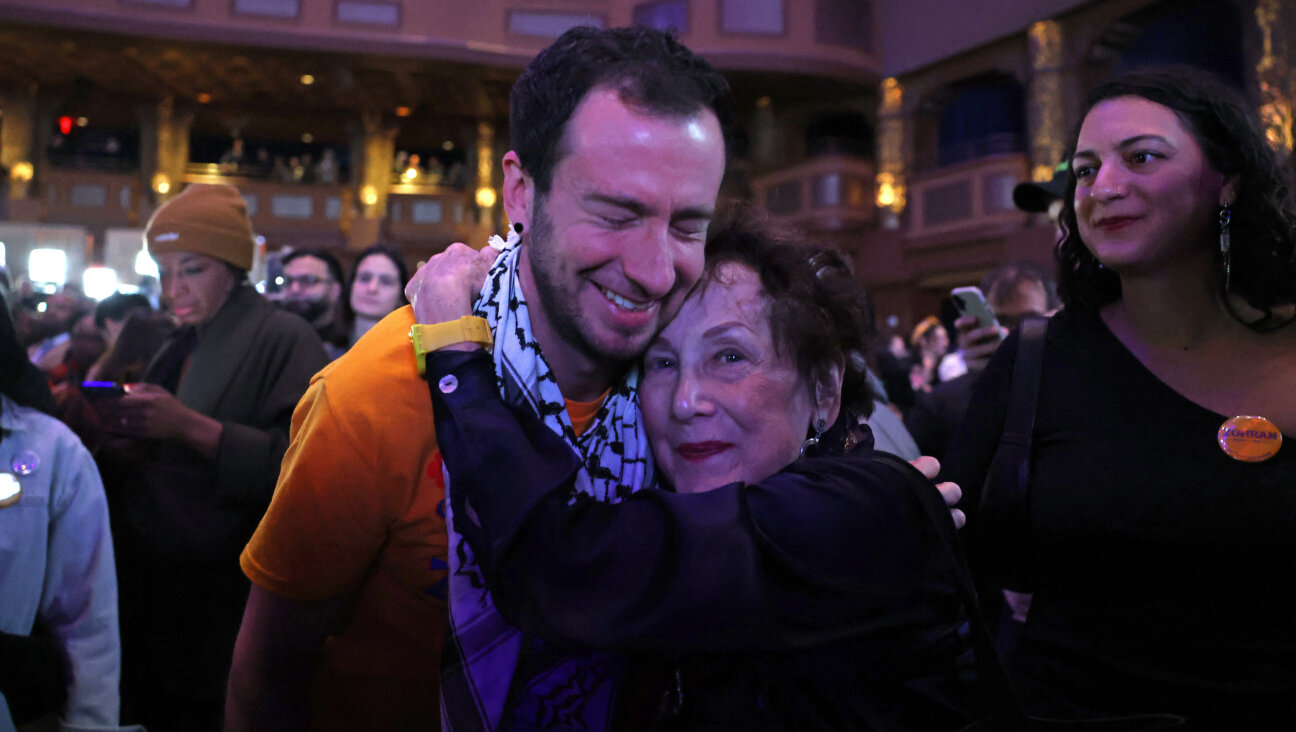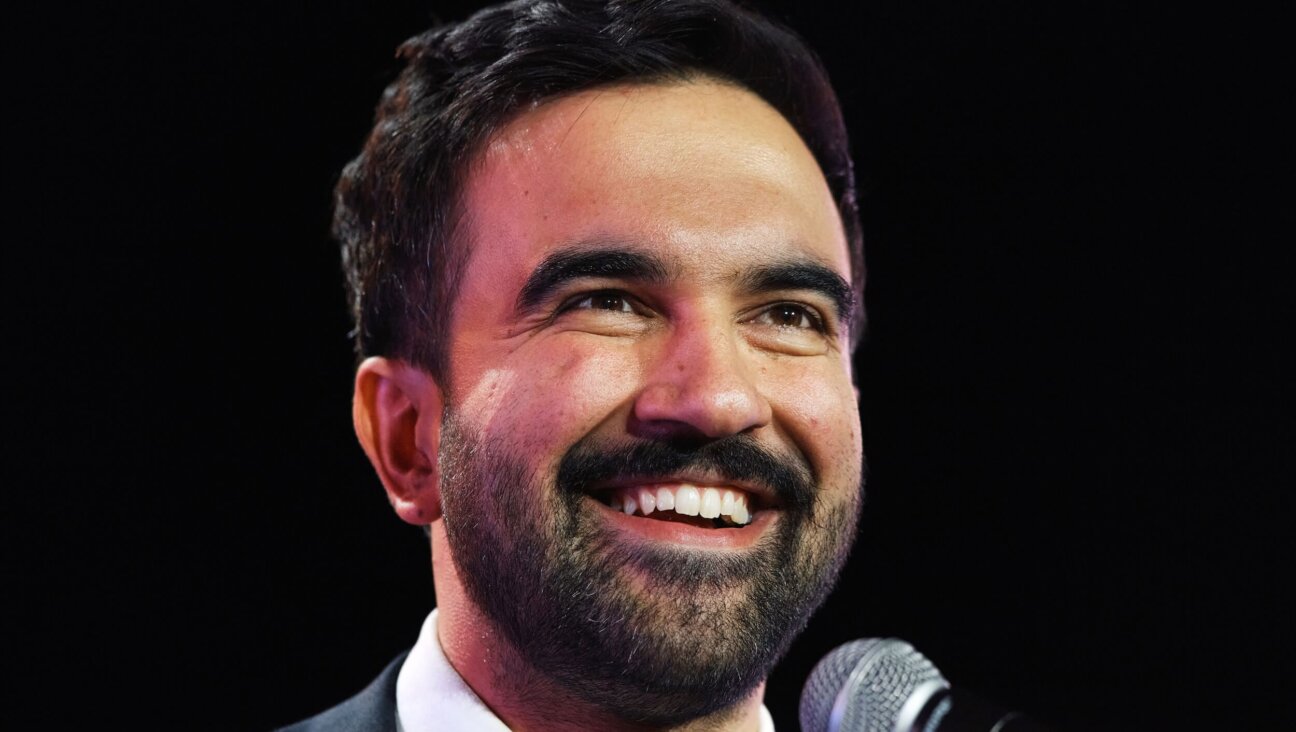Homo Viennensis: A Painter and His City
‘Wien bleibt Wien,” the saying goes here — “Vienna is ever Vienna.” The former imperial capital has always regarded itself in contrast to the rest of Europe, and the rest of the world for that matter, and its Jews have been no different in that regard. From the city’s full opening to them under Emperor Franz Josef in 1867 until the nightmarish Anschluss by Nazi Germany in 1938, the Jews were in the vanguard of what made Vienna Vienna, taking leading roles in medicine, law and business, politics, the arts and journalism, the worlds of the cabaret and the coffeehouse.
Vienna was different, too, in the way that a surprising number of Jews returned to the battered city after the end of World War II and the full revelations of the horrors of the Shoah, in which gentile Austrians played a role far disproportionate to their relatively small numbers in Hitler’s Reich. Some 120,000 Jews, mostly Viennese, escaped from Austria before the War, and another 65,000 were murdered by the Nazis in a trail of camps that stretched from here to Auschwitz. Yet from Bruno Kreisky, who became Austria’s powerful Socialist prime minister (and would-be legitimizer of Yasser Arafat) from 1970 to 1983, to one of Kreisky’s most bitter opponents, Nazi-hunter Simon Wiesenthal, who today can still see another Kreisky legacy — the world headquarters of the Organization of Petroleum Exporting Countries, or OPEC — from his apartment window on the Schwedenplatz; from Karl Farkas, the great proprietor and performer at the Café Simplicissimus, the “Simpl,” who reopened his cabaret in the 1950s even after his “Doppelconferénce” comedy partner Fritz Grünbaum was beaten to death in Dachau in 1941, to the social psychiatrist Viktor Frankl and his “search for meaning,” Jews not only returned to Vienna but resumed and assumed important roles here.
But the painter and graphic artist Georg Chaimowicz was unique even among this distinguished roster, and his death here on June 5, the eve of Shavuot, just two days after his 74th birthday, left a tremendous void. Chaimowicz returned to Vienna in 1949 neither despite its sordid Austro-German history nor oblivious to it. Rather, he made himself a witness, an aggressive activist of memory and opponent of its denial, all the while making art that grew in depth, importance and power literally until his last days in a Vienna hospital.
Born into a prosperous manufacturing family in 1929, “Schurli” Chaimowicz and his family lived the lives of the successful assimilated Jews who saw themselves as being equally or more Viennese than their gentile neighbors. Living in the stylish Third District, and even attending a Montessori school right up until the Anschluss, Chaimowicz fled with his family first to Brno, then to Prague, then to Amsterdam, where they gained safe passage to Bogota, Colombia, and where his father, Heinrich, who had been imprisoned by the SS, re-established himself as Enrique, a textile manufacturer. Already showing signs of both artistic talent and shrewd and sarcastic political insight as a child (how many other artists of whatever later accomplishment would have gladly exhibited and published their juvenilia 50 years on? Then again, how many other 10-year-old artists took on Adolf Hitler with both biting wit and panache?), Schurli focused on art in school and ultimately enrolled at the Escuela de Bellas Artes de la Universidad Nacional in Bogota before returning to Vienna in 1949 to study at the Akademie der Bildenden Kunst with Sergius Pauser and Herbert Boeckl. His graduation work in 1955 already marked him — literally — as a talent outside of the norms of this then-quite culturally conservative city: “Stone Self-Portrait — Psalm 129” showed Georg Juan Chaimowicz, as he then styled himself, as a carved granite bust, his head emblazoned with a Star of David, floating amid an abstract and deserted universe as a small “ordinary” man turns his back on him. The allusion to the psalm could hardly have been more telling: “Much have they afflicted me from my youth up; but they have not prevailed against me./ The plowers plowed upon my back; they made long their furrows./ The Lord is righteous; He hath cut asunder the cords of the wicked./ Let them be ashamed and turned backward, all they that hate Zion.”
From there, Chaimowicz continued on a path that was often lonely but in which his determination never wavered. In his art and his personal campaigns he exposed neorightist and neofascist tendencies in his homeland and in the rest of Europe, and he was not afraid to depict local Austrian governmental figures with Nazi pasts by means of Nazi insignia in his work, frequently drawing libel suits — not all of which he could win in a legal structure that puts the onus on the artist or writer to clear himself in such a dispute.
Only once in his early career did he receive official national recognition for what was growing into a remarkable output of some 26,000 paintings and works on paper: In 1966 he and the writer Elias Canetti, who would later win the Nobel Prize for Literature, were selected to represent Austria at the International Book Fair in Nice, France. Chaimowicz used the opportunity to denounce Austrian hypocrisy and antisemitism and also to find a second home in Vence in the Cote d’Azur. From the 1970s, he moved toward an artistic process that he called “Surface” work, where ink was used only to sign his works and barely visible scratchings and crumplings on all white backgrounds indicated Jewish symbols. In 1988, he and a young cousin, Thomas Schärf, successfully waged a battle to save the historic synagogue in Baden, a spa town just south of Vienna, from dubious “urban renewal” plans. In 1999 and 2000, he at last received the recognitions that were his due in an honor-conscious country, the latter of which, the Austrian Cross of Honor for Science and Art, First Class, had to be presented privately at a hastily arranged ceremony as Chaimowicz made it clear that he would not accept any recognition from the coalition government that was about to installed, a government that included neorightist Jörg Haider’s Freedom Party.
It can be argued that documentation, witness and reinsertion into daily life are the three greatest missions of the Jews in Europe today. Chaimowicz was a living embodiment of all three, and one who made sure that the Viennese difference, in his case at least, was to do more, not less in each of these areas. He was, in the words of Felicitas Heimann-Jelinek, chief curator of the Jewish Museum of the City of Vienna and sponsor of a major Chaimowicz 70th birthday retrospective and catalog in 1990, the ultimate “homo viennensis.”
















